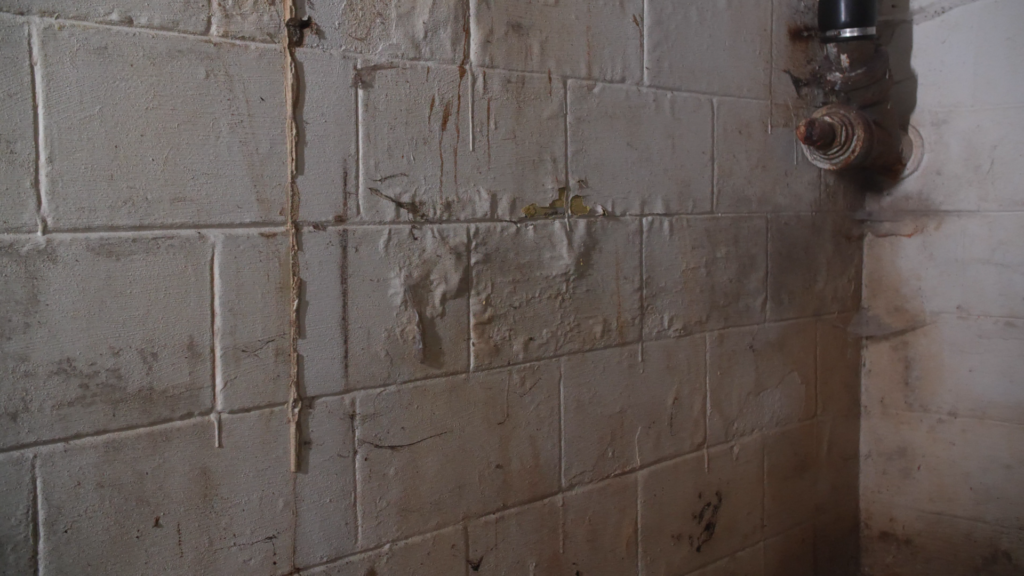Understanding the Basement Waterproofing Process: Step-by-Step Guide of Basement Waterproofing Process
One of the most important components of maintaining a healthy house is keeping the basement dry and free of moisture. Basement waterproofing is a crucial technique that protects your house from water damage, mold growth, and structural difficulties. Every homeowner should know about the main steps of basement waterproofing to get aware of it and prevent fraud in the future. In this article, we will look at a step-by-step guide to basement waterproofing, as well as several approaches, tactics, and measures to keep your basement safe and dry. But before that, we will explore some exceptional benefits of waterproofing your basement.
Expert Roofing offers top-notch services of basement waterproofing with high-quality craftsmanship to keep your basement dry and protected.

Water Damage Protection:
The primary advantage of waterproofing is water damage protection. Water intrusion can wreak havoc on structures, causing structural damage, rot, and mold growth. Waterproofing prevents water from accessing walls, floors, and foundations by forming a watertight barrier, hence assuring the building’s lifetime.
Protects Structural Integrity:
Water damage is one of the most common causes of damaged structural integrity. When water seeps into the foundation or walls, it weakens the materials over time, potentially leading to fissures and structural failure. Waterproofing protects against these problems while maintaining the building’s general stability and safety.
Prevents Mold and Mildew Growth:
Mold and mildew thrive in damp and moist settings. Mold not only causes health problems, but it also ruins building materials and reduces indoor air quality. Waterproofing keeps interior spaces dry, prevents mold and mildew growth, and promotes a healthy living or working environment.
Property Value Increase:
A building that has been waterproofed has a better market value. Prospective purchasers are more likely to invest in buildings that have a history of adequate waterproofing since it ensures that the structure is structurally strong and well-maintained. Waterproofing also protects the property from water-related difficulties during severe rain or flooding, making it an appealing investment.
Energy Efficiency:
Waterproofing contributes to energy efficiency. When water penetrates the building, the humidity level rises. As a result, heating and cooling systems have to work more to maintain a reasonable indoor temperature. With good waterproofing, the structure remains dry, minimizing the pressure on HVAC systems and resulting in decreased energy usage.
Peace of Mind:
Knowing that your property is safeguarded from water damage gives both homeowners and business owners peace of mind. Waterproofing reduces the chance of unexpected leaks, flooding, and costly repairs, allowing occupants to feel comfortable in their living or working environment.
Expands Livable Space:
For properties with basements, waterproofing can transform these once damp and unusable spaces into desirable living areas. By keeping the basement dry and free of moisture, homeowners can use it for a variety of reasons, such as a home gym, playroom, or additional living space.
Long-term Cost Savings:
While investing in waterproofing may appear to be an upfront cost, it pays out in the long run. Preventing water damage and the need for substantial repairs saves money on correcting structural issues and dealing with mold cleanup.
Step-by-Step Guide to Basement Waterproofing Process
Step 1: Identify the Source of Water Infiltration
It is critical to determine the source of water intrusion before beginning the basement waterproofing process. Water can enter the basement through a variety of channels, including foundation fractures, poor grading, leaking windows, and malfunctioning drainage systems. Conduct a thorough inspection to see where the water is entering.
Step 2: Exterior Inspection and Repairs
Begin by looking at the outside of your house. Check for apparent fractures in the foundation walls, gaps around windows, and degraded sealants. These flaws can allow water to flow into the basement. Seal and fix any fractures or gaps to avoid further water intrusion.
Expert Roofing Expert in inspection and repair of the basement by their trained and experienced craftsmanship.
Step 3: Take care of Grading and Landscaping.
Proper grading and landscaping are essential in diverting water away from the foundation. Ensure that the land slopes away from your house, directing water to drainage systems or the street. This prevents water from accumulating around the foundation walls, lowering the danger of leaks.
Step 4: Install a Functional Drainage System
To keep your basement dry, you’ll need an effective drainage system. A French drain is the most often used technique, which entails digging a trench around the foundation and inserting a perforated pipe with a layer of gravel. This system gathers and directs water away from the foundation, preventing water damage in your basement.
Step 5: Install a Waterproofing Membrane or Coating.
Consider putting a waterproofing membrane or coating on the outer foundation walls to improve protection even further. These compounds form a barrier, preventing water from penetrating the porous concrete. Waterproofing membranes are particularly effective because they provide a constant moisture seal.
Step 6: Inspect and Repair the Interior.
After dealing with the outside, turn your focus to the basement’s interior. Examine the area for evidence of water damage, moisture, or mold growth. If you discover any cracks in the walls or flooring, use appropriate sealants to patch them.
Step 7: If Necessary, Install an Interior Drainage System.
Consider installing an indoor drainage system when outdoor alternatives are insufficient or impractical. This entails digging a channel around the basement floor and connecting it to a sump pump. The sump pump collects water and pumps it away from the foundation of your home, keeping your basement dry.
Step 8: Apply Interior Waterproofing Coatings
Apply interior waterproofing coatings to the basement walls to add an extra layer of protection. These coatings form a barrier that keeps moisture from penetrating interior surfaces.
Step 9: Insulate and Ventilate the Home.
Proper insulation and ventilation are essential for keeping a basement dry and healthy. Insulate basement walls to keep the temperature stable and condensation at bay. Make sure there is adequate ventilation to lower humidity levels, which might aid in mold formation.
Step 10: Regular Inspections and Maintenance
Basement waterproofing is a continuous process that necessitates regular maintenance and inspections. Examine the outside and interior for signs of water leakage, foundation flaws, or drainage difficulties. Address issues as soon as possible to avoid potential water damage.
Conclusion
Basement waterproofing is a crucial investment in your property’s structural stability and overall wellness. By following this step-by-step guide, you can quickly prevent water penetration, mold growth, and other potential problems caused by water damage. Remember that each basement is unique, and your waterproofing plan must be adjusted accordingly. If you’re unsure or dealing with complex concerns, seek the advice of a professional waterproofing contractor to secure the best outcomes for your basement. A dry and healthy basement not only provides peace of mind but also adds long-term value to your property.
The Expert Basement Waterproofing team specializes in providing the best basement waterproofing services to their customers to keep their basements dry and prevent any moisture.
What is the significance of basement waterproofing?
How do I know if my basement needs waterproofing?
Is it possible to waterproof my basement on my own, or do I need to employ a professional?

Lifetime Warranties
You can’t go wrong with a lifetime warranty on all services
FREE Inspections
FREE Estimates
Financing Available
Check out our competitive rates
Check out our competitive rates
Providing services throughout Northern Indiana and Southern Michigan
